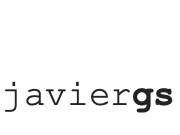I am serving as a chair of Aditya Vikram’s Graduate Supervisory Committee. The committee includes Dr. Ashraf Gaffar (co-chair) and Dr. Michael Findler (member).
The thesis defense is scheduled for April 10, 2020, at 2:30 pm MST.
Abstract
Traumatic injuries are the leading cause of death in children under 18, with head trauma being the leading cause of death in children below 5. A large but unknown number of traumatic injuries are non-accidental, i.e. inflicted. The lack of sensitivity and specificity required to diagnose Abusive Head Trauma (AHT) from radiological studies results in putting the children at risk of re-injury and death. Modern Deep Learning techniques can be utilized to detect Abusive Head Trauma using Computer Tomography (CT) scans. Training models using these techniques are only a part of building AI-driven Computer-Aided Diagnostic systems. There are challenges in deploying the models to make them highly available and scalable.
The aim of the thesis is to model the domain of Abusive Head Trauma using Deep Learning techniques and Software Engineering Practices. It has been done in collaboration with Phoenix Children Hospital (PCH). The thesis breaks down AHT into sub-domains of Medical Knowledge, Data Collection, Data Pre-processing, Image Synthesis, Image Classification, Building APIs, Containers and Kubernetes. Data Collection and Pre-processing were done at PCH with the help of trauma researchers and radiologists. Experiments are run using Deep Learning models such as DCGAN (for Image Synthesis), Pretrained 2D and custom 3D CNN classifiers for the classification task. The trained models are exposed as APIs using Flask web framework, contained using Docker, and deployed on a Kubernetes cluster.
The results are analyzed based on the accuracy of the models, the feasibility of their implementation as APIs, and load testing the Kubernetes cluster. The results suggest the need of Data Annotation at the Slice level for CT scans and an increase in the Data Collection process. Load Testing reveals the auto-scalability feature of the cluster to serve a high number of requests. The current challenges are discussed, as well as the scope for future work.
